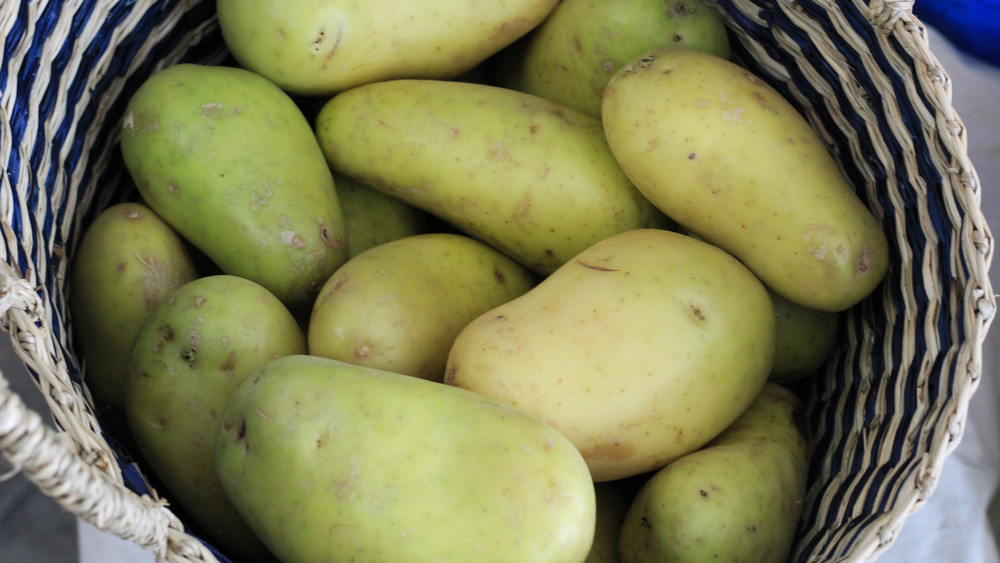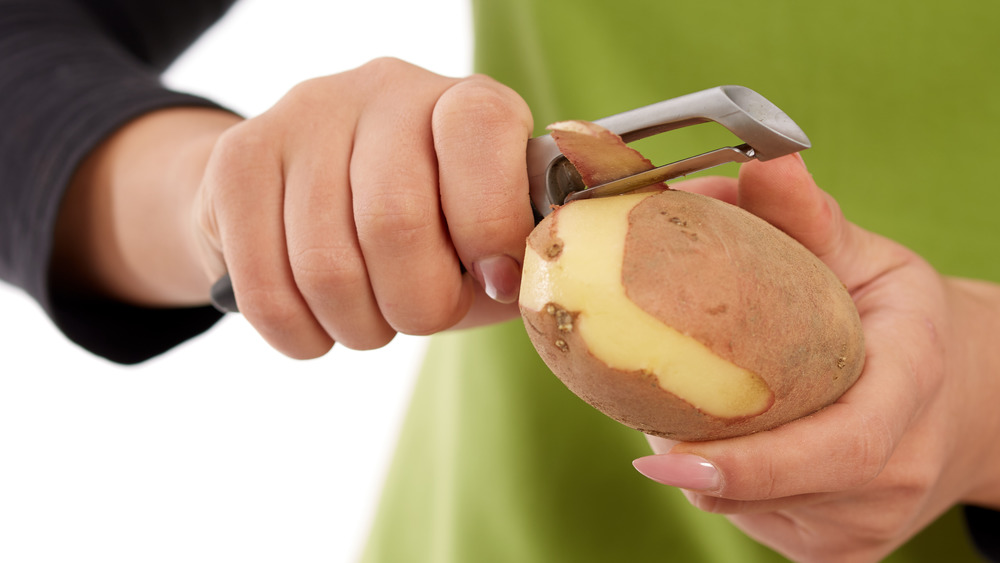Is It Safe To Eat Green Potatoes?
When you reach for that bag of potatoes in the pantry, and see that they have a definite greenish tinge to them, what do you do? Toss the whole bag? Cut off the green part? Or just dig in because, hey, they're plants and plant-based foods are good? Also, that five-pound bag represents $3.49 of your hard-earned money.
The answer is a touch more complicated than just tossing it or keeping it. That green color is a result of chlorophyll that has formed in response to light exposure, damage, or temperatures that are higher or lower than ideal. And the chlorophyll itself, which is found in all green plants and which most of us consume on a regular basis, is harmless.
The problem is that the same conditions that stimulate the production of chlorophyll in potatoes also produce a toxic compound called solanine. Solanine is part of the plant's natural defense system, repelling bacteria, fungi, insects, and other hungry critters. And, if the concentrations are high enough, it can also be toxic to humans (via Healthline).
Signs of solanine poisoning are nausea, vomiting, headache, sweating, and diarrhea.
Peeling potatoes reduces the amount of solanine
Fortunately, the amounts of solanine needed to make you sick are quite high, and the concentrations are highest in the peel and sprouts ("eyes") of the potato. Unless the whole potato is covered in green, peeling it and removing the sprouts should reduce solanine levels by 30 percent or more. If the whole thing is green though, your potato will also taste bitter, so it's best to toss it.
Since the greening of potatoes is dependent mostly on exposure to light, proper storage is very important. Sabine Tanios, a PhD candidate in Tasmania who is working on research into why and how potatoes develop green coloring, says "Keeping potatoes in the dark is the key factor towards avoiding greening, but in the supermarket you cannot keep your potatoes in a black box" (via ABC News).
True, but you can inspect potatoes before buying and make sure they're not already green. And, at home, you can store them in an opaque bag to shield them from light, and keep them in the basement, a root cellar, or other cool environment. (No, not the fridge — it's too cold.)
And if you do discover a potato with a couple of green patches, don't worry. As Ms. Tanios notes, "Just peel away the green parts and you can eat it."


